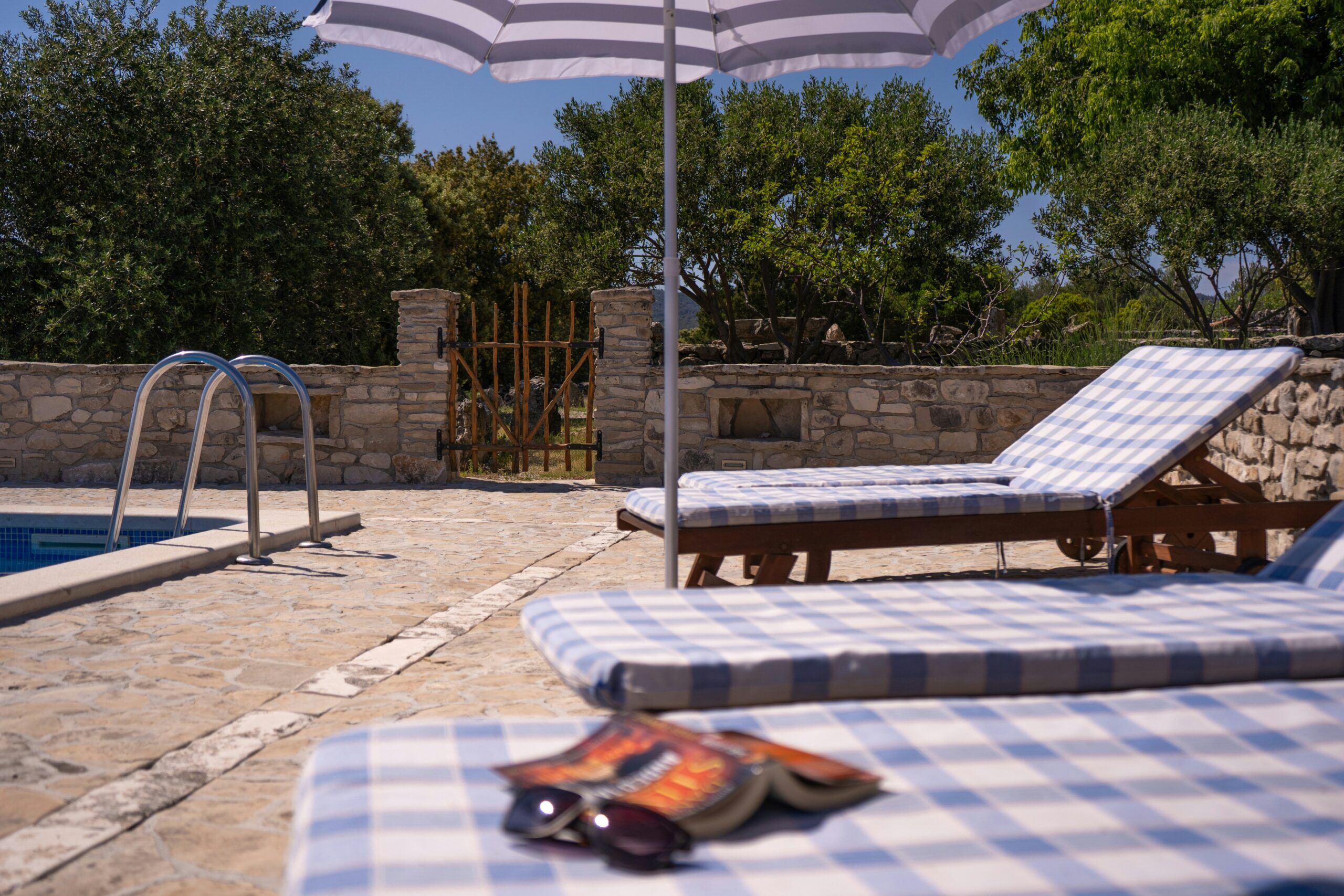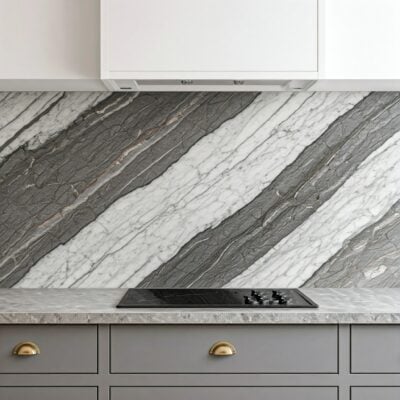If you are designing the outdoor area of your new home or considering renovating an existing pool area, you might be thinking about whether stone pavers or concrete pavers are the right choice for you.
The truth is that both materials offer advantages and disadvantages, and ultimately it will come down to factors such as your budget, personal preference and needs. However, to help you understand the difference between concrete and stone pavers, we have put together this handy breakdown.
Choosing Pavers - Concrete vs Stone Strengths and Weaknesses
Both natural stone and concrete pavers are used widely as flooring materials, especially for outside applications, such as a pool area.
But there are some key differences between the two.
1. Cost
Generally, using natural stone pavers is more expensive – in material cost and labour – then concrete. But, understandably, this does depend on the type of stone you choose as well as the type and style of concrete pavers you opt for.
Both materials have options suitable for a range of budgets.
2.Durability
Similarly, both stone pavers and concrete pavers are highly durable. Of course, this is a significant contributing factor as to why they are among the leading options of building material for use around a pool area.
Pools and outdoor areas require high levels of durability. There is the level of activity that goes in and around a pool, but uniquely your pavers will be exposed to a lot of water as well as environmental and weather elements.
Stone pavers are highly durable materials and an investment that will last for a long time. However, these sorts of pavers can shift slightly over time. On the other hand, concrete pavers, whilst also being durable, can be prone to cracking over the long term and after intensive water exposure.
3. Maintenance
Natural stone pavers are easy to clean but to keep them looking and functioning as good as new, regular cleaning is necessary. This just means using a soft cleaning tool and non-harsh chemical cleaners to give a quick wipe down every so often. Many types of stone also require occasional professional resealing to ensure that water from the pool doesn’t seep into the stone.
Concrete pavers are also very low maintenance. But, like stone, it requires resealing every few years to ensure its integrity and prevent water or moisture from seeping into the material and causing cracking.
4. Aesthetic
Comparing the aesthetics of natural stone pavers vs concrete pavers is really a matter of personal preference. Natural stone comes in a versatile variety of design options with a range of colours, shades, patterns and styles – all effusing natural beauty and uniqueness.
By contrast, concrete pavers can be made to mimic the aesthetic of other materials or have the visual style and uniform look of classic concrete.
5. Safety
Safety is a top priority of everyone and around the pool area it is of even greater concern. Natural stone is highly slip-resistant when dry and stone pavers for your pool can be tailored with anti-slip treatments to make them even safer when wet.
Concrete pavers tend to be more slippery, when untreated, than stone pavers. However, like stone, they can also be treated with anti-slip coverings.
Choosing Stone Pavers: The Pros and Cons
As we mentioned before, the right choice for your pool area is going to come down to personal factors, constraints and preferences.
What is your budget?
It can be easier to determine your budget from the outset as it can drive your decision making. Remember to account for not just the material costs but initial installation costs and long-term maintenance costs.
What style are you looking for?
Both stone pavers and concrete pavers come in a variety of aesthetic styles but they are also distinct from one another. Think about what sort of visual impact you want your pool pavers to have. Are you after something unique and natural, like stone, or something more uniform and consistent, like concrete? Take into account the rest of the design style of the outdoor and pool area as well so that your pavers do not stick out like a sore thumb.
What is your lifestyle like?
Different pools, different rules. Think about who will be using your pool area and how they will be using it. If children will be frequenting the area and playing in the pool, using more slip resistant materials is a must. If the pool is going to be used by adults, who will do so in a far more low-key and restrained way, there may be less concern regarding additional safety features.
What is your long term plan?
Different building materials can make expanding your pool area more or less difficult, or influence the resale value of your house should you choose to move in the future. Think about how you intend on using and living in your home when making a decision.
Where do you live?
Consider your local climate. Stone and concrete are both hardy materials but if you live in an area prone to extreme heat, cold or rain, you might want to consider a particular type of material accordingly.
The Pros of Choosing Natural Stone Pavers
The Cons of Choosing Natural Stone Pavers
- Stone pavers are designed to be highly slip-resistant.
- Stone pavers are easy to maintain.
- Stone pavers come in a wide range of colours, patterns and styles.
- Each stone paver is unique.
- The cost of material and labour for installation can be higher.
- Stone pavers need to be resealed every few years.
- In some instances, stone pavers can shift slightly over time.
The Pros of Choosing Concrete Pavers
The Cons of Choosing Concrete Pavers
- Concrete is generally more cost-effective.
- Concrete pavers are easy to maintain.
- Concrete can be stamped, stained and produced to design specification in many cases.
- Concrete can be prone to cracking when the temperature is extreme or after heavy activity.
- Concrete can be slippery without anti-slip protection.
- Concrete can be more difficult and costly to repair.
When diving into the natural stone pavers vs concrete pavers debate for your pool area, there is no wrong answer.
But if you are not sure what the ‘right’ answer is for your application, home and needs, make sure to reach out to the team here at Euro Marble. We are more than happy to talk you through the difference between stone pavers and concrete, answer questions about your particular preferences and considerations, and walk you through our showroom of amazing natural stone.


